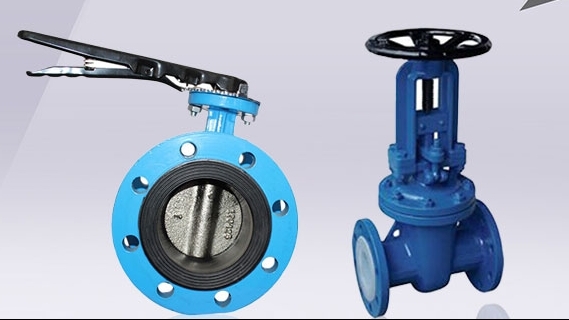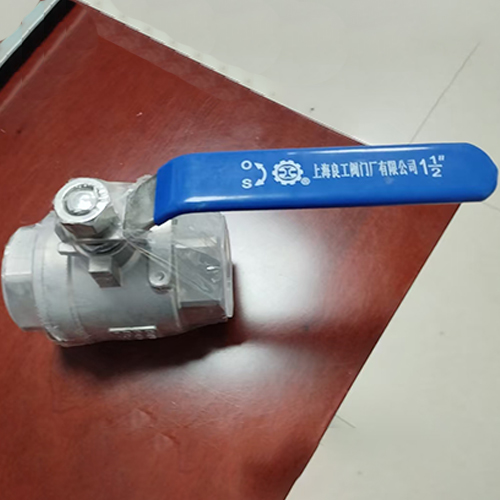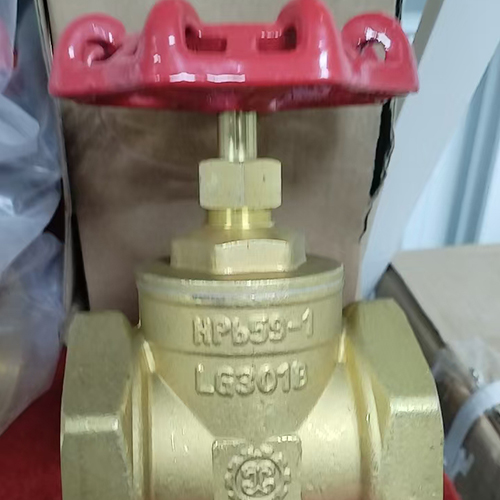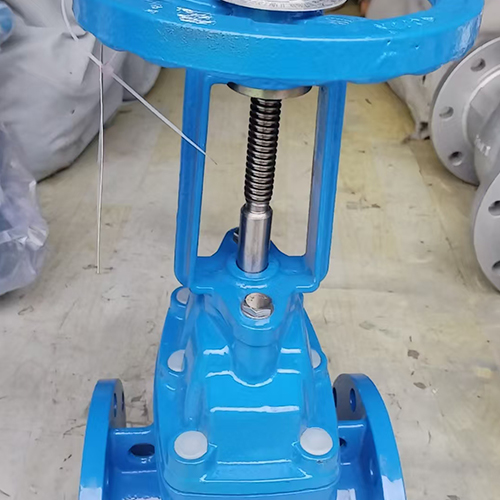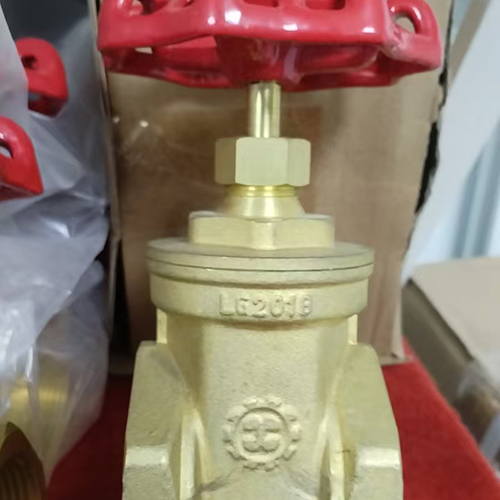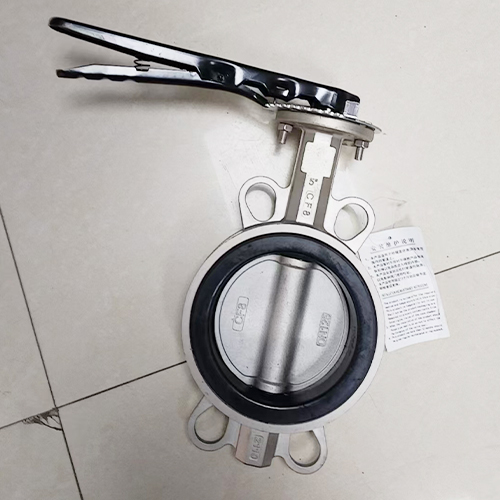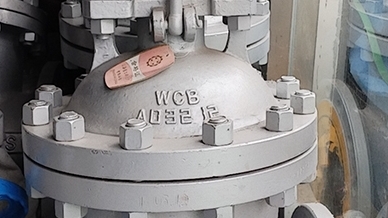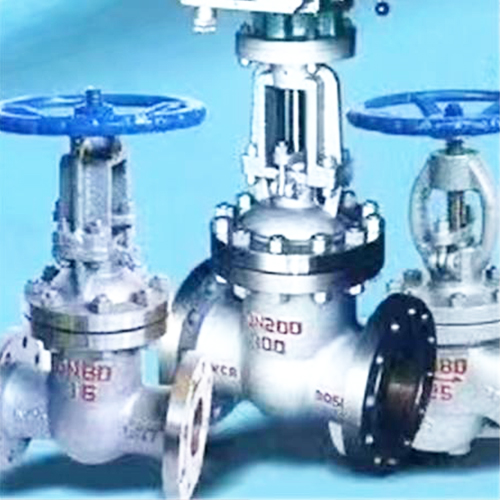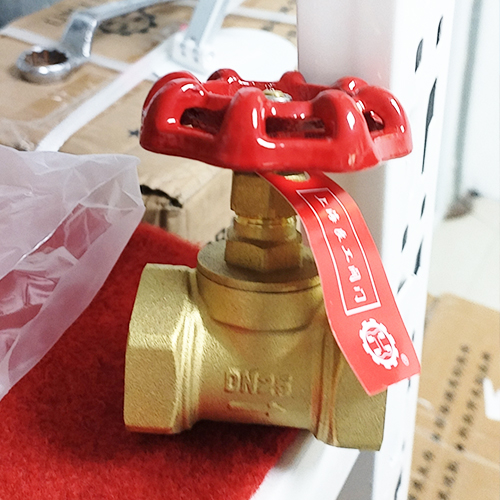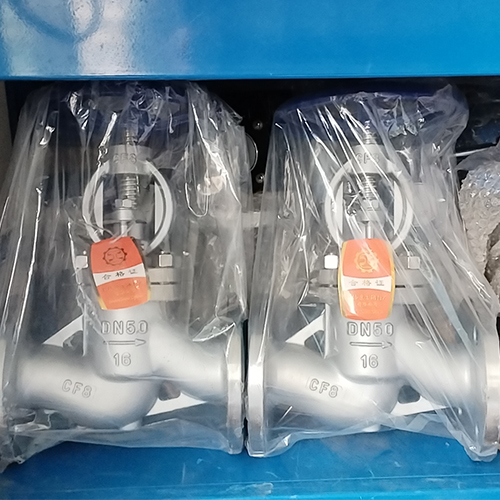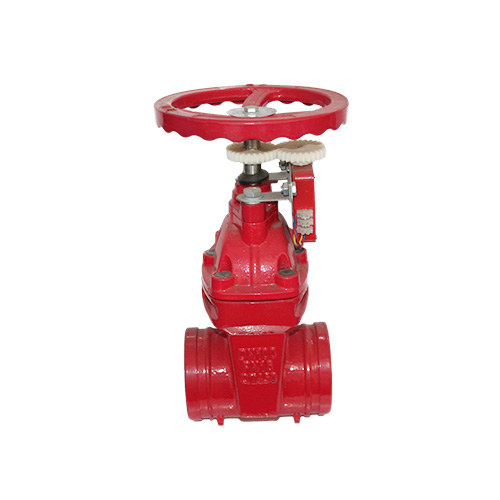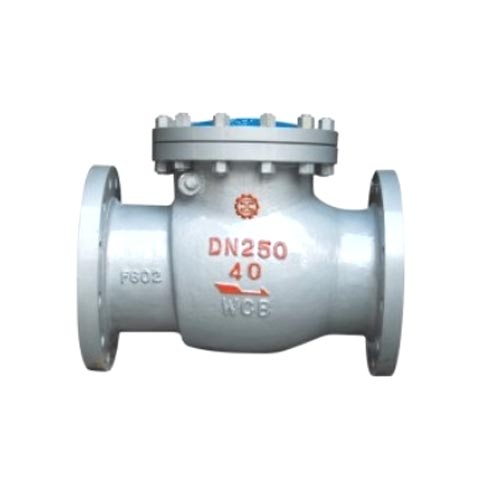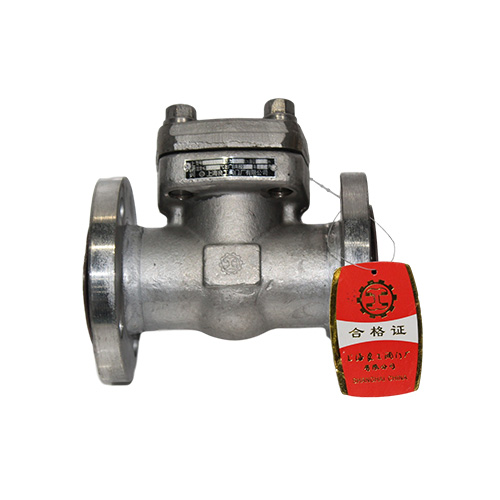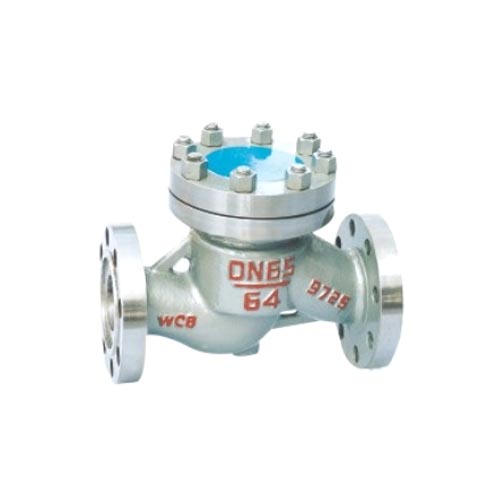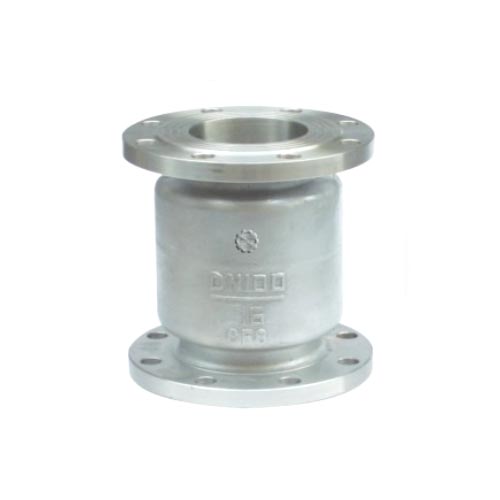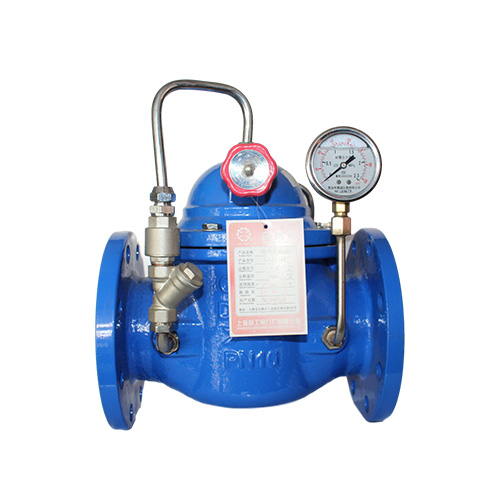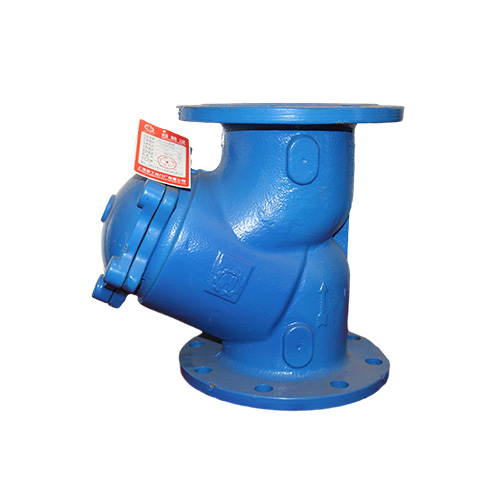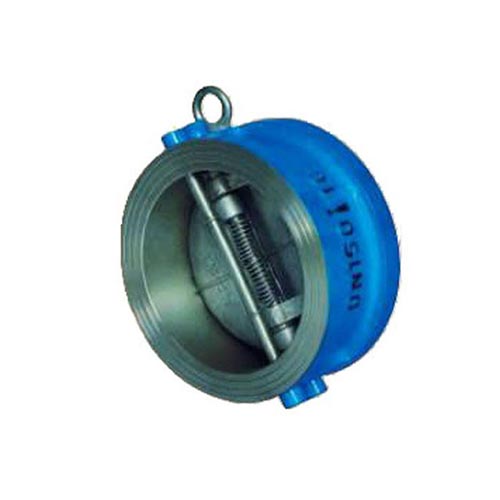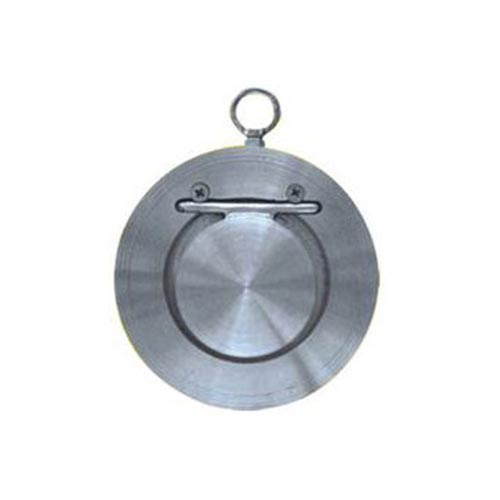一、超全阀门选型技巧
1、 Selection Techniques for Ultra Full Valve
在流体管道系统中,调节阀是控制元件,其投资约占管道工程费用的30%~50%。阀门的主要功能为启闭、节流、调节流量、隔离设备和管道系统、防止介质倒流、调节和排泄压力等。阀门也是管路中最复杂的元件,它一般由多个零部件装配而成,技术含量高。随着石油化工工业的迅速发展,石油化工生产装置中的介质大多具有毒性大、可燃、易爆和腐蚀性强的特点,运行工况较复杂苛刻,操作温度和压力较高,开工周期长,阀门一旦出现故障,轻者导致介质泄漏,既污染环境又造成经济损失,重者导致装置停工停产,甚至造成恶性事故。因而,在管道设计中,科学合理地选择阀门既能降低装置的建设费用,又保证生产安全运行。文章主要介绍了各种常用阀门如闸阀、截止阀、节流阀、旋塞阀、球阀、隔膜调节阀等的选型方法。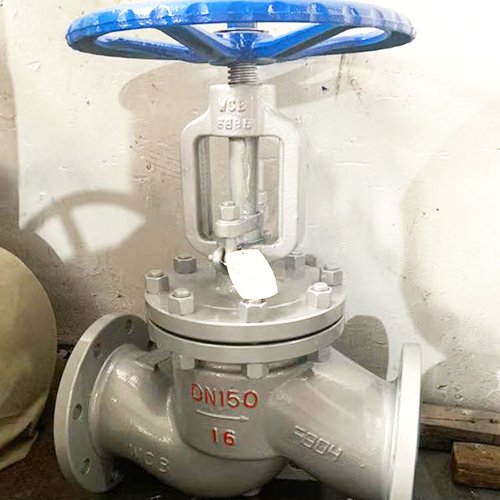
In the fluid pipeline system, the control valve is the control element, and its investment accounts for 30%~50% of the pipeline engineering cost. The main functions of valves are opening and closing, throttling, regulating flow, isolating equipment and pipeline systems, preventing medium backflow, regulating and discharging pressure, etc. Valves are also the most complex components in pipelines, usually assembled from multiple parts with high technical content. With the rapid development of the petrochemical industry, most of the media in petrochemical production facilities have the characteristics of high toxicity, flammability, explosiveness, and strong corrosiveness. The operating conditions are complex and demanding, with high operating temperatures and pressures, long operating cycles, and once valves fail, it can cause medium leakage, polluting the environment and causing economic losses. In severe cases, it can lead to equipment shutdown and even cause serious accidents. Therefore, in pipeline design, scientifically and reasonably selecting valves can not only reduce the construction cost of the device, but also ensure the safe operation of production. The article mainly introduces the selection methods of various commonly used valves such as gate valves, globe valves, throttle valves, plug valves, ball valves, diaphragm regulating valves, etc.
1、阀门选型的要点1、明确阀门在设备或装置中的用途确定阀门的工作条件:适用介质的性质、工作压力、工作温度和操纵控制方式等。
1. Key points of valve selection: 1. Clarify the purpose of the valve in the equipment or device and determine the working conditions of the valve, including the properties of the applicable medium, working pressure, working temperature, and control mode.
2、正确选择阀门的类型阀门型式的正确选择是以设计者对整个生产工艺流程、操作工况的充分掌握为先决条件的,在选择阀门类型时,设计人员应首先掌握每种阀门的结构特点和性能。
2. The correct choice of valve type is based on the designer's full understanding of the entire production process and operating conditions. When selecting valve types, designers should first grasp the structural characteristics and performance of each valve.
3、确定阀门的端部连接在螺纹连接、法兰连接、焊接端部连接中,前两种最常用。螺纹连接的阀门主要是公称通径在50mm以下的阀门,如果通径尺寸过大,连接部的安装和密封十分困难。法兰连接的阀门,其安装和拆卸都比较方便,但是较螺纹连接的阀门笨重,价格较高,故它适用于各种通径和压力的管道连接。焊接连接适用于较苛刻的条件下,比法兰连接更为可靠。但是焊接连接的阀门拆卸和重新安装都比较困难,所以它的使用仅限于通常能长期可靠地运行,或使用条件苛刻、温度较高的场合。
3. Determine the most commonly used end connections for valves, including threaded connections, flange connections, and welded end connections. Valves with threaded connections are mainly those with a nominal diameter of less than 50mm. If the diameter size is too large, the installation and sealing of the connection part will be very difficult. Valves connected by flanges are relatively easy to install and disassemble, but they are bulky and expensive compared to valves connected by threads. Therefore, they are suitable for connecting pipelines of various diameters and pressures. Welding connections are suitable for more demanding conditions and are more reliable than flange connections. However, the disassembly and reinstallation of welded valves are relatively difficult, so their use is limited to situations where they can operate reliably for a long time or in harsh conditions with high temperatures.
4、阀门材质的选择选择阀门的壳体、内件和密封面的材质,除了考虑工作介质的物理性能(温度、压力)和化学性能(腐蚀性)外,还应掌握介质的清洁程度(有无固体颗粒),除此之外,还要参照国家和使用部门的有关规定。正确合理的选择阀门的材质可以获得阀门最经济的使用寿命和最佳的使用性能。阀体材料选用顺序为:铸铁-碳钢-不锈钢,密封圈材料选用顺序为:橡胶-铜-合金钢-F4。
4. The selection of valve material for the shell, internal components, and sealing surface of the valve should not only consider the physical properties (temperature, pressure) and chemical properties (corrosiveness) of the working medium, but also grasp the cleanliness of the medium (whether there are solid particles). In addition, relevant regulations of the country and the using department should also be referred to. The correct and reasonable selection of valve materials can achieve the most economical service life and optimal performance of the valve. The selection order of valve body materials is: cast iron carbon steel stainless steel, and the selection order of sealing ring materials is: rubber copper alloy steel-F4.
5、其它除此之外,还应确定流经阀门流体的流量及压力等级等,利用现有的资料(如阀门产品目录、阀门产品样本等)选择适当的阀门。
5. In addition, the flow rate and pressure rating of the fluid flowing through the valve should also be determined, and appropriate valves should be selected using existing information such as valve product catalogs, valve product samples, etc.
二、常用阀门介绍阀门种类多、品种复杂,主要有闸阀、截止阀、节流阀、蝶阀、旋塞阀、球阀、电动阀、隔膜阀、止回阀、安全阀、减压阀、蒸汽疏水阀和紧急切断阀等,其中常用的有闸阀、截止阀、节流阀、旋塞阀、蝶阀、球阀、止回阀、隔膜阀。
2、 Introduction to commonly used valves: There are many types and complex varieties of valves, mainly including gate valves, globe valves, throttle valves, butterfly valves, plug valves, ball valves, electric valves, diaphragm valves, check valves, safety valves, pressure reducing valves, steam trap valves, and emergency shut-off valves. Among them, commonly used valves include gate valves, globe valves, throttle valves, plug valves, butterfly valves, ball valves, check valves, and diaphragm valves.
1、闸阀闸阀是指启闭体(阀板)由阀杆带动,沿阀座密封面作升降运动的阀门,可接通或截断流体的通道。闸阀较截止阀密封性能好,流体阻力小,启闭省力,具有一定的调节性能,是最常用的截断阀门之一。缺点是尺寸大、结构较截止阀复杂,密封面易磨损,不易维修,一般不宜作节流用。按闸阀阀杆上螺纹位置分为明杆式和暗杆式两类。按闸板的结构特点又可分为楔式和平行式两类。
1. Gate valve refers to a valve whose opening and closing body (valve plate) is driven by the valve stem and moves up and down along the sealing surface of the valve seat, which can connect or cut off the passage of fluid. Gate valves have better sealing performance than globe valves, lower fluid resistance, easier opening and closing, and have certain regulating performance. They are one of the most commonly used shut-off valves. The disadvantages are large size, complex structure compared to globe valves, easy wear of sealing surfaces, difficult maintenance, and generally not suitable for throttling purposes. According to the thread position on the valve stem of the gate valve, it is divided into two types: rising stem type and hidden stem type. According to the structural characteristics of the gate, it can be divided into two types: wedge type and parallel type.
2、截止阀截止阀是向下闭合式阀门,启闭件(阀瓣)由阀杆带动沿阀座(密封面)轴线作升降运动的阀门。与闸阀相比,其调节性能好,密封性能差,结构简单,制造维修方便,流体阻力较大,价格便宜,是一种常用的截断阀,一般用于中、小口径的管道。
2. Globe valve is a downward closing valve, and the opening and closing member (valve disc) is driven by the valve stem to move up and down along the axis of the valve seat (sealing surface). Compared with gate valves, it has good regulating performance, poor sealing performance, simple structure, easy manufacturing and maintenance, high fluid resistance, and low price. It is a commonly used block valve, generally used for medium and small diameter pipelines.
3、球阀球阀的启闭件是带圆形通孔的球体,球体随阀杆转动以实现启闭的阀门。球阀的结构简单,开关迅速,操作方便,体积小,重量轻,零部件少,流体阻力小,密封性好,维修方便。
3. The opening and closing component of a ball valve is a spherical body with a circular through-hole, which rotates with the valve stem to achieve opening and closing of the valve. Ball valves have a simple structure, quick opening and closing, easy operation, small size, light weight, few components, low fluid resistance, good sealing performance, and convenient maintenance.
4、节流阀节流阀除阀瓣以外与截止阀结构基本相同,其阀瓣是节流部件,不同形状具有不同的特性,阀座的通径不宜过大,因其开启高度较小介质流速增大,从而加速对阀瓣的冲蚀。节流阀外形尺寸小、重量轻、调节性能好,但调节精度不高。
4. The structure of a throttle valve is basically the same as that of a globe valve, except for the valve disc. The valve disc is a throttling component, and different shapes have different characteristics. The diameter of the valve seat should not be too large because its opening height is small and the medium flow rate increases, thereby accelerating the erosion of the valve disc. The throttle valve has small external dimensions, light weight, and good adjustment performance, but the adjustment accuracy is not high.
5、旋塞阀旋塞阀是以带通孔的塞体作为启闭件,塞体随阀杆转动,以实现启闭的阀门。旋塞阀结构简单、开关迅速、操作方便、流体阻力小,部件少、重量轻。旋塞阀有直通式、三通式和四通式。直通式旋塞阀用于截断介质,三通式和四通式旋塞阀用于改变介质方向或进行介质分流。
5. A plug valve is a valve that uses a plug body with a through-hole as the opening and closing member, and the plug body rotates with the valve stem to achieve opening and closing. The plug valve has a simple structure, quick opening and closing, easy operation, low fluid resistance, few components, and light weight. Plug valves have straight through, three-way, and four-way types. Direct type plug valves are used to cut off media, while three-way and four-way plug valves are used to change the direction of media or divert media.
6、蝶阀蝶阀是蝶板在阀体内绕固定轴旋转90°即可完成启闭作用。蝶阀体积小、重量轻、结构简单,只由少数几个零件组成。而且只需旋转90°;即可快速启闭,操作简单。蝶阀处于完全开启位置时,蝶板厚度是介质流经阀体时唯一的阻力,因此通过该阀门所产生的压力降很小,故具有较好的流量控制特性。蝶阀分弹性软密封和金属硬密封两种密封型式。
6. Butterfly valve is a butterfly valve that can be opened and closed by rotating the butterfly plate 90 ° around a fixed axis inside the valve body. Butterfly valves are small in size, light in weight, and have a simple structure, consisting of only a few components. And only need to rotate 90 degrees; It can be quickly opened and closed, with simple operation. When the butterfly valve is in the fully open position, the thickness of the butterfly plate is the only resistance for the medium to flow through the valve body. Therefore, the pressure drop generated by this valve is very small, and it has good flow control characteristics. Butterfly valves are divided into two sealing types: elastic soft seals and metal hard seals.
弹性密封阀门,密封圈可以镶嵌在阀体上或附在蝶板周边,密封性能好,既可用于节流,又可用于中等真空管道和腐蚀性介质。
Elastic sealing valve, the sealing ring can be embedded on the valve body or attached around the butterfly plate, with good sealing performance. It can be used for throttling, as well as for medium vacuum pipelines and corrosive media.
采用金属密封的阀门一般较弹性密封的阀门寿命长,但很难做到完全密封,通常用于流量和压降变化大、要求节流性能好的场合。金属密封能适应于较高的工作温度,弹性密封则具有受温度限制的缺陷。
Valves with metal seals generally have a longer lifespan than those with elastic seals, but it is difficult to achieve complete sealing. They are usually used in situations where flow and pressure drop changes are large and good throttling performance is required. Metal seals can adapt to higher operating temperatures, while elastic seals have the drawback of being limited by temperature.
7、止回阀止回阀是能自动阻止流体倒流的阀门,止回阀的阀瓣在流体压力作用下开启,流体从进口侧流向出口侧。当进口侧压力低于出口侧时,阀瓣在流体压差、本身重力等因素作用下,自动关闭,以防止流体倒流。按结构形式分升降式止回阀和旋启式止回阀。
7. Check valve is a valve that can automatically prevent fluid backflow. The valve disc of the check valve opens under the action of fluid pressure, and fluid flows from the inlet side to the outlet side. When the pressure on the inlet side is lower than that on the outlet side, the valve disc automatically closes under the action of factors such as fluid pressure difference and its own gravity to prevent fluid backflow. Divided into lift check valves and swing check valves according to their structural forms.
升降式较旋启式密封性好,流体阻力大。对于泵吸入管的吸入口处,宜选用底阀,其作用是:开泵前灌注水使泵的入口管充满水;停泵后保持入口管和泵体充满水,以备再次启动。底阀一般只安装在泵进口的垂直管道上,并且介质自下而上流动。
The lifting type has better sealing performance and greater fluid resistance than the rotary opening type. For the suction inlet of the pump suction pipe, it is advisable to use a bottom valve, which is used to fill the inlet pipe of the pump with water before starting the pump; Keep the inlet pipe and pump body filled with water after stopping the pump, in preparation for restarting. Bottom valves are generally only installed on the vertical pipeline at the pump inlet, and the medium flows from bottom to top.
8、隔膜阀隔膜阀的启闭件是一块橡胶隔膜,夹于阀体与阀盖之间。隔膜中间突出部分固定在阀杆上,阀体内衬有橡胶,由于介质不进入阀盖内腔,因此阀杆无需填料箱。隔膜阀结构简单、密封性能好,便于维修,流体阻力小。隔膜阀分为堰式、直通式、直角式和直流式。
8. The opening and closing component of a diaphragm valve is a rubber diaphragm sandwiched between the valve body and the valve cover. The protruding part in the middle of the diaphragm is fixed on the valve stem, and the valve body is lined with rubber. Since the medium does not enter the inner cavity of the valve cover, the valve stem does not require a packing box. The diaphragm valve has a simple structure, good sealing performance, easy maintenance, and low fluid resistance. Diaphragm valves are divided into weir type, straight through type, right angle type, and direct flow type.
三、常用阀门选型说明
3、 Common Valve Selection Instructions
1、闸阀的选型说明一般情况下,应首选闸阀。闸阀除适用于蒸汽、油品等介质外,还适用于含有粒状固体及粘度较大的介质,并适用于放空和低真空系统的阀门。对带有固体颗粒的介质,闸阀阀体上应带有一个或两个吹扫孔。对低温介质,应选用低温专用闸阀。
1. In general, the selection of gate valves should be preferred. Gate valves are not only suitable for media such as steam and oil, but also for media containing granular solids and high viscosity, and are suitable for valves in venting and low vacuum systems. For media with solid particles, the gate valve body should have one or two blowdown holes. For low-temperature media, low-temperature dedicated gate valves should be selected.
2、截止阀选型说明截止阀适用于对流体阻力要求不严的管路上,即对压力损失考虑不大,以及高温、高压介质的管路或装置,适用于DN<200mm的蒸汽等介质管道上;
2. Selection instructions for globe valves: Globe valves are suitable for pipelines that do not have strict requirements for fluid resistance, with little consideration for pressure loss, as well as pipelines or devices for high-temperature and high-pressure media. They are suitable for steam and other media pipelines with DN<200mm;
小型阀门可选用截止阀,如针形阀、仪表阀、取样阀、压力计阀等;截止阀有流量调节或压力调节,但对调节精度要求不高,而且管路直径又比较小时,宜选用截止阀或节流阀;
Small valves can use globe valves, such as needle valves, instrument valves, sampling valves, pressure gauge valves, etc; Globe valves have flow regulation or pressure regulation, but do not require high regulation accuracy, and the pipeline diameter is relatively small. Globe valves or throttle valves should be selected;
对于剧毒介质,宜选用波纹管密封的截止阀;但截止阀不宜用于粘度较大的介质和含有颗粒易沉淀的介质,也不宜作放空阀及低真空系统的阀门。
For highly toxic media, it is advisable to use bellows sealed globe valves; However, globe valves should not be used for media with high viscosity and media containing particles that are prone to precipitation, nor should they be used as vent valves or valves for low vacuum systems.
3、球阀选型说明球阀适用于低温、高压、粘度大的介质。大多数球阀可用于带悬浮固体颗粒的介质中,依据密封的材料要求也可用于粉状和颗粒状的介质;全通道球阀不适用于流量调节,但适用于要求快速启闭的场合,便于实现事故紧急切断;
3. Ball valve selection instructions: Ball valves are suitable for media with low temperature, high pressure, and high viscosity. Most ball valves can be used in media with suspended solid particles, and can also be used in powder and granular media depending on the sealing material requirements; Full channel ball valves are not suitable for flow regulation, but are suitable for situations that require quick opening and closing, making it easy to achieve emergency shutdown in case of accidents;
通常在密封性能严格、磨损、缩口通道、启闭动作迅速、高压截止(压差大)、低噪音、有气化现象、操作力矩小、流体阻力小的管路中,推荐使用球阀。球阀适用于轻型结构、低压截止、腐蚀性介质中;球阀还是低温、深冷介质的最理想阀门,低温介质的管路系统和装置上,宜选用加上阀盖的低温球阀;选用浮动球球阀时其阀座材料应承接球体和工作介质的载荷,大口径的球阀在操作时需要较大的力,DN≥200mm的球阀应选用蜗轮传动形式;
Ball valves are recommended for pipelines with strict sealing performance, wear, constricted channels, rapid opening and closing actions, high pressure cutoff (large pressure difference), low noise, gasification phenomenon, low operating torque, and low fluid resistance. Ball valves are suitable for lightweight structures, low-pressure shut-off, and corrosive media; Ball valves are still the most ideal valves for low-temperature and cryogenic media. For pipeline systems and devices for low-temperature media, low-temperature ball valves with valve covers should be selected; When selecting a floating ball valve, its seat material should bear the load of the ball and working medium. Large diameter ball valves require greater force during operation, and ball valves with DN ≥ 200mm should use worm gear transmission;
固定球球阀适用于较大口径及压力较高的场合;另外,用于工艺剧毒物料、可燃介质管道的球阀,应具有防火、防静电结构。
Fixed ball valves are suitable for larger diameters and high-pressure applications; In addition, ball valves used for the production of highly toxic materials and flammable medium pipelines should have fire-resistant and anti-static structures.
4、节流阀选型说明节流阀适用于介质温度较低、压力较高的场合,适用于需要调节流量和压力的部位,不适用于粘度大和含有固体颗粒的介质,不宜作隔断阀。
4. Throttle valve selection instructions: Throttle valves are suitable for situations where the medium temperature is low and the pressure is high. They are suitable for areas where flow and pressure need to be adjusted. They are not suitable for media with high viscosity and solid particles, and should not be used as block valves.
5、旋塞阀选型说明旋塞阀适用于要求快速启闭的场合,一般不适用于蒸汽及温度较高的介质,用于温度较低、粘度大的介质,也适用于带悬浮颗粒的介质。
5. Plug valve selection instructions: Plug valves are suitable for situations that require quick opening and closing, and are generally not suitable for steam and high-temperature media. They are used for media with low temperature and high viscosity, and are also suitable for media with suspended particles.
6、蝶阀选型说明蝶阀适用于口径较大(如DN﹥600mm)及结构长度要求短,以及需要进行流量调节及启闭要求快速的场合,一般用于温度≤80℃、压力≤1.0MPa的水、油品和压缩空气等介质;由于蝶阀相对于闸阀、球阀压力损失比较大,故蝶阀适用于压力损失要求不严的管路系统中。
6. Butterfly valve selection instructions: Butterfly valves are suitable for larger diameters (such as DN>600mm), shorter structural length requirements, and situations that require flow regulation and quick opening and closing. They are generally used for media such as water, oil, and compressed air with temperatures ≤ 80 ℃ and pressures ≤ 1.0MPa; Due to the relatively large pressure loss of butterfly valves compared to gate valves and ball valves, butterfly valves are suitable for pipeline systems with less stringent pressure loss requirements.
7、止回阀选型说明止回阀一般适用于清净介质,不宜用于含有固体颗粒和粘度较大的介质。当≤40mm时,宜采用升降止回阀(仅允许安装在水平管道上);当DN=50~400mm时,宜采用旋启式升降止回阀(在水平和垂直管道上都可安装,如安装在垂直管道上,介质流向要由下而上);
7. Selection instructions for check valves: Check valves are generally suitable for clean media and should not be used for media containing solid particles and high viscosity. When ≤ 40mm, it is advisable to use a lift check valve (only allowed to be installed on horizontal pipelines); When DN=50-400mm, it is advisable to use a rotary lift check valve (which can be installed on both horizontal and vertical pipelines. If installed on a vertical pipeline, the flow direction of the medium should be from bottom to top);
当DN≥450mm时,宜采用缓冲型止回阀;当DN=100~400mm也可选用对夹式止回阀;旋启式止回阀可以做成很高的工作压力,PN可以达到42MPa,根据壳体及密封件的材质不同可适用于任何工作介质和任何工作温度范围。介质为水、蒸汽、气体、腐蚀性介质、油品、药品等。介质工作温度范围在-196~800℃之间。
When DN ≥ 450mm, a buffer type check valve should be used; When DN=100-400mm, clamp type check valves can also be used; Swing check valves can be designed for high working pressures, with PN reaching up to 42MPa. Depending on the material of the shell and seal, they can be suitable for any working medium and any working temperature range. The medium includes water, steam, gas, corrosive medium, oil, medicine, etc. The working temperature range of the medium is between -196 and 800 ℃.
8、隔膜阀选型说明隔膜阀适用于工作温度小于200℃、压力小于1.0MPa的油品、水、酸性介质和含悬浮物的介质,不适用于有机溶剂和强氧化剂介质;
8. Diaphragm valve selection instructions: Diaphragm valves are suitable for oil products, water, acidic media, and media containing suspended solids with working temperatures less than 200 ℃ and pressures less than 1.0MPa. They are not suitable for organic solvents and strong oxidant media;
研磨颗粒性介质宜选堰式隔膜阀,选用堰式隔膜阀要参照它的流量特性表;粘性流体、水泥浆以及沉淀性介质宜选用直通式隔膜阀;除特定要求,隔膜阀不宜用于真空管路和真空设备上。
Grinding granular media should choose weir type diaphragm valves, and the selection of weir type diaphragm valves should refer to their flow characteristics table; Viscous fluids, cement slurries, and sedimentary media should use straight through diaphragm valves; Unless otherwise specified, diaphragm valves are not suitable for use in vacuum pipelines and vacuum equipment.
四、各种阀门试压方法一般情况下,工业阀门在使用时不做强度试验,但修补过后阀体和阀盖或腐蚀损伤的阀体和阀盖应做强度试验。对于安全阀,其整定压和回座压力及其他试验应符合其说明书和有关规程的规定。阀门安装之彰应作强度和密封性试验。低压阀门抽查20%,如不合格应100%的检查;中、高压阀门应100%的检查。阀门试压常用的介质有水、油、空气、蒸汽、氮气等,各类工业阀门含气动阀门的试压方法如下:
4、 In general, industrial valves do not undergo strength tests during use, but after repair, the valve body and valve cover, or those that have been corroded or damaged, should undergo strength tests. For safety valves, their set pressure, reseating pressure, and other tests should comply with their instructions and relevant regulations. The installation of valves should undergo strength and sealing tests. 20% of low-pressure valves shall be randomly inspected, and if they are found to be unqualified, 100% inspection shall be conducted; Medium and high pressure valves should be inspected 100%. The commonly used media for valve pressure testing include water, oil, air, steam, nitrogen, etc. The pressure testing methods for various industrial valves, including pneumatic valves, are as follows:
1、球阀的试压方法气动球阀的强度试验应在球体半开状态下进行。
1. The pressure test method for ball valves. The strength test for pneumatic ball valves should be conducted with the ball body in a semi open state.
①浮动式球阀密封性试验:将阀处于半开状态,一端引入试验介质,另一端封闭;将球体转动几次,阀门处于关闭状态时打开封闭端检查,同时检查填料和垫片处密封性能,不得有渗漏现象。然后从另一端引入试验介质,重复上述试验。②固定式球阀密封性试验:在试验前将球体空载转动几次,固定式球阀处于关闭状态,从一端引人试验介质至规定值;用压力表检查引入端密封性能,使用压力表精度0.5~1级,量程为试验压力的1.5倍。
① Floating ball valve sealing test: Place the valve in a semi open state, with one end introducing the test medium and the other end closed; Rotate the sphere several times, and when the valve is in the closed state, open the closed end for inspection. At the same time, check the sealing performance of the packing and gasket, and there should be no leakage. Then introduce the test medium from the other end and repeat the above experiment. ② Fixed ball valve sealing test: Before the test, rotate the ball several times without load, keep the fixed ball valve in the closed state, and introduce the test medium from one end to the specified value; Check the sealing performance of the inlet end with a pressure gauge, with an accuracy of 0.5-1 level and a range of 1.5 times the test pressure.
在规定时问内,没有降压现象为合格;再从另一端引入试验介质,重复上述试验。然后,将阀门处于半开状态,两端封闭,内腔充满介质,在试验压力下检查填料和垫片处,不得有渗漏。
If there is no pressure drop phenomenon within the specified time, it is considered qualified; Introduce the test medium from the other end and repeat the above experiment. Then, place the valve in a semi open position, seal both ends, and fill the inner chamber with medium. Check the packing and gasket under test pressure for any leakage.
③三通球阀应在各个位置上进行密封性试验。2、止回阀的试压方法止回阀试验状态:升降式止回阀阀瓣轴线处于与水平垂直的位置;旋启式止回阀通道轴线和阀瓣轴线处于与水平线近似平行的位置。强度试验时,从进口端引入试验介质至规定值,另一端封闭,看阀体和阀盖无渗漏为合格。密封性试验从出口端引入试验介质,在进口端检查密封面处,填料和垫片处无渗漏为合格。
③ Three way ball valves should undergo sealing tests at various positions. 2. The pressure testing method for check valves: Check valve test status: The axis of the valve disc of the lift check valve is in a position perpendicular to the horizontal; The axis of the rotary check valve channel and the axis of the valve disc are located approximately parallel to the horizontal line. During the strength test, the test medium is introduced from the inlet end to the specified value, and the other end is closed. It is considered qualified if there is no leakage in the valve body and valve cover. The sealing test is conducted by introducing the test medium from the outlet end, and checking the sealing surface, packing, and gasket at the inlet end for no leakage, which is considered qualified.
3、减压阀的试压方法
3. Pressure testing method for pressure reducing valve
①减压阀的强度试验一般以单件试验后组装,亦可组装后试验。强度试验持续时间:DN<50mm的lmin;dn65~150mm的大于2min;dn>150mm的大于3min。波纹管与组件焊接后,应用减压阀后最高压力的1.5倍、用空气进行强度试验。
① The strength test of pressure reducing valves is generally conducted by assembling single pieces after testing, or by testing after assembly. Duration of strength test: 1 minute for DN<50mm; DN65-150mm for more than 2 minutes; DN>150mm for more than 3 minutes. After welding the corrugated pipe and components, apply a pressure reducing valve at 1.5 times the maximum pressure and conduct a strength test with air.
②密封性试验时按实际工作介质进行。用空气或水试验时,以公称压力的1.1倍进行试验;用蒸汽试验时,以工作温度下允许的最高工作压力进行。进口压力与出口压力之差要求不小于0.2MPa。试验方法为:进口压力调定后,逐渐调节该阀的调节螺钉,使出口压力在最大与最小值范围内能灵敏地、连续地变化,不得有停滞、卡阻现象。对蒸汽减压阀,当进口压力调走后,关闭阀后截断阀,出口压力为最高和最低值,在2min内,其出口压力的升值应符合表4.176—22中规定,同时,阀后管道容积符合表4.18中规定为合格;对水、空气减压阀,当进口压力调定后,出口压力为零时,关闭减压阀进行密封性试验,在2min内无泄漏为合格。
② The sealing test shall be conducted according to the actual working medium. When testing with air or water, conduct the test at 1.1 times the nominal pressure; When conducting steam tests, use the maximum allowable working pressure at the operating temperature. The difference between the inlet pressure and the outlet pressure is required to be no less than 0.2 MPa. The experimental method is to gradually adjust the adjusting screw of the valve after setting the inlet pressure, so that the outlet pressure can change sensitively and continuously within the range of maximum and minimum values, without stagnation or blockage. For steam pressure reducing valves, when the inlet pressure is adjusted, the shut-off valve behind the valve is closed, and the outlet pressure is the highest and lowest values. Within 2 minutes, the increase in outlet pressure should comply with the provisions of Table 4.176-22. At the same time, the pipeline volume behind the valve should comply with the provisions of Table 4.18 to be qualified; For water and air pressure reducing valves, when the inlet pressure is set and the outlet pressure is zero, the pressure reducing valve should be closed for a sealing test. If there is no leakage within 2 minutes, it is considered qualified.
4、蝶阀的试压方法气动蝶阀的强度试验与截止阀一样。蝶阀的密封性能试验应从介质流人端引入试验介质,蝶板应开启,另一端封闭,注入压力至规定值;检查填料和其他密封处无渗漏后,关闭蝶板,打开另一端,检查蝶板密封处无渗漏为合格。作为调节流量用的蝶阀可不做密封性能试验。
4. The pressure test method for butterfly valves is the same as the strength test for globe valves for pneumatic butterfly valves. The sealing performance test of butterfly valves should introduce the test medium from the end where the medium flows. The butterfly plate should be opened and the other end should be closed, and the pressure should be injected to the specified value; After checking that there is no leakage in the packing and other sealing areas, close the butterfly plate and open the other end. If there is no leakage in the sealing area of the butterfly plate, it is considered qualified. Butterfly valves used for regulating flow do not require sealing performance testing.
5、旋塞阀的试压方法①旋塞阀进行强度试验时,介质从一端引入,封闭其余通路,将塞子依次旋转到全开的各工作位置进行试验,阀体未发现渗漏为合格。②密封性试验时,直通式旋塞应保持腔内与通路压力相等,将塞子旋转到关闭位置,从另一端进行检查,然后将塞子旋转180°重复上述试验;三通式或四通式旋塞阀应保持腔内与通路一端压力相等,将塞子依次旋转到关闭位置,压力从直角端引入,从其他端同时进行检查。旋塞阀试验前允许在密封面上涂一层非酸性稀润滑油,在规定时间内未发现渗漏和扩大的水滴为合格。旋塞阀试验时间可短一些,一般按公称通径规定为l~3min。煤气用的旋塞阀应以1.25倍工作压力进行空气密封性试验。6、隔膜阀的试压方法隔膜阀强度试验从任一端引入介质,开启阀瓣,另一端封闭,试验压力升至规定值后,看阀体和阀盖无渗漏为合格。然后降压至密封性试验压力,关闭阀瓣,打开另一端进行检查,无渗漏为合格。7、截止阀和节流阀的试压方法截止阀和节流阀的强度试验,通常将组装好的阀门放在试压架中,打开阀瓣,注入介质至规定值,检查阀体和阀盖是否冒汗和渗漏。也可单件进行强度试验。密封性试验只做截止阀。
5. The pressure testing method for plug valves: ① When conducting a strength test on a plug valve, the medium is introduced from one end, the remaining passages are closed, and the plug is rotated to each fully open working position for testing. If no leakage is found in the valve body, it is considered qualified. ② During the sealing test, the straight through plug should maintain equal pressure in the chamber and passage. Rotate the plug to the closed position, check from the other end, and then rotate the plug 180 ° to repeat the above test; A three-way or four-way plug valve should maintain equal pressure between the chamber and one end of the passage. The plug should be rotated to the closed position in sequence, and pressure should be introduced from the right angle end and checked simultaneously from the other ends. Before the plug valve test, it is allowed to apply a layer of non acidic lubricating oil on the sealing surface. If no leakage or enlarged water droplets are found within the specified time, it is considered qualified. The test time for plug valves can be shorter, generally ranging from 1 to 3 minutes according to the nominal diameter regulations. The gas plug valve should undergo an air tightness test at 1.25 times the working pressure. 6. The pressure test method for diaphragm valves is to introduce the medium from either end, open the valve disc, and seal the other end. After the test pressure rises to the specified value, the valve body and valve cover are considered qualified if there is no leakage. Then reduce the pressure to the sealing test pressure, close the valve disc, and open the other end for inspection. If there is no leakage, it is considered qualified. 7. The pressure testing method for globe valves and throttle valves. The strength test for globe valves and throttle valves usually involves placing the assembled valve in a pressure testing frame, opening the valve disc, injecting the medium to the specified value, and checking whether the valve body and valve cover are sweating and leaking. Strength tests can also be conducted on individual pieces. The sealing test is only conducted on globe valves.
试验时截止阀的阀杆成垂直状态,阀瓣开启,介质从阀瓣底下一端引入至规定值,检查填料和垫片处;待合格后关闭阀瓣,打开另一端检查是否有渗漏。如果阀门强度和密封性试验都要做时,可先做强度试验,然后降压至密封性试验规定值,检查填料和垫片处;再关闭阀瓣,打开出口端检查密封面是否渗漏。8、闸阀的试压方法闸阀的强度试验与截止阀一样。闸阀的密封性试验有两种方法。①闸板开启,使阀内压力升至规定值;然后关闭闸板,立即取出闸阀,检查闸板两侧密封处有否渗漏或者直接往阀盖上的堵头内注入试验介质至规定值,检查闸板两侧密封处。以上方法叫做中间试压。这种方法不宜在公称通径DN32mm以下的闸阀做密封试验。②另一种方法是将闸板开启,使阀门试验压力升至规定值;然后关闸板,打开一端盲板,检查密封面是否渗漏。再倒头,作以上重复试验至合格为止。气动闸阀填料和垫片处密封性试验应在闸板密封性试验之前进行。9、安全阀的试压方法①安全阀的强度试验与其他阀门一样,是用水作试验的。试验阀体下部时,压力从进I=I端引入,密封面封闭;试验阀体上部和阀盖时,压力从出El端引入,其他端封闭。在规定时间内阀体和阀盖无渗漏现象为合格。②密封性试验和定压试验,一般使用介质是:蒸汽用安全阀以饱和蒸汽为试验介质;氨或其他气体用阀以空气为试验介质;水和其他非腐蚀性液体用阀以水为试验介质。对于一些重要位置的安全阀常用氮气为试验介质。密封试验以公称压力值为试验压力进行试验,其次数不少于两次,在规定时间内无渗漏为合格。验漏方法有两种:一是将安全阀各连接处密封,用黄油把薄纸封贴在出El法兰上,薄纸鼓起为漏,不鼓起为合格;二是用黄油把薄塑料板或其他板封贴在出口法兰下部,灌水封住阀瓣,检验水中不冒泡为合格。安全阀定压和回座压力试验次数不少于3次,符合规定为合格。安全阀的各项性能试验见GB/T12242–1989安全阀性能试验方法》。阀门选型总结通过以上分析可知,一般情况下,应首选闸阀。
During the experiment, the valve stem of the shut-off valve is in a vertical position, the valve disc is open, and the medium is introduced from the bottom end of the valve disc to the specified value. Check the packing and gasket; After passing the inspection, close the valve disc and open the other end to check for any leakage. If both the strength and sealing tests of the valve need to be conducted, the strength test can be conducted first, and then the pressure can be reduced to the specified value for the sealing test, and the packing and gasket can be checked; Close the valve disc again and open the outlet end to check if there is any leakage on the sealing surface. 8. The pressure testing method for gate valves is the same as that for globe valves in terms of strength testing. There are two methods for the sealing test of gate valves. ① Open the gate to increase the pressure inside the valve to the specified value; Then close the gate valve, immediately remove the gate valve, check whether there is any leakage at the sealing points on both sides of the gate valve, or directly inject the test medium into the plug on the valve cover to the specified value, and check the sealing points on both sides of the gate valve. The above method is called intermediate pressure testing. This method is not suitable for conducting sealing tests on gate valves with a nominal diameter of DN32mm or less. ② Another method is to open the gate and increase the test pressure of the valve to the specified value; Then close the gate, open one end blind plate, and check whether the sealing surface leaks. Invert the head again and repeat the above test until it is qualified. The sealing test of the packing and gasket of the pneumatic gate valve should be conducted before the sealing test of the gate valve. 9. The pressure testing method for safety valves ① The strength test for safety valves, like other valves, is conducted using water. When testing the lower part of the valve body, pressure is introduced from the inlet I=I end, and the sealing surface is closed; When testing the upper part of the valve body and valve cover, pressure is introduced from the outlet end El, and the other ends are closed. If there is no leakage in the valve body and valve cover within the specified time, it is considered qualified. ② The sealing test and constant pressure test generally use saturated steam as the test medium for steam safety valves; Valves for ammonia or other gases use air as the test medium; Valves for water and other non corrosive liquids use water as the test medium. Nitrogen is commonly used as the test medium for safety valves in important locations. The sealing test shall be conducted at the nominal pressure value as the test pressure, and the number of times shall not be less than two. If there is no leakage within the specified time, it is considered qualified. There are two methods for leak detection: one is to seal the connections of the safety valve, and use butter to seal the thin paper on the outlet flange. If the thin paper bulges, it is considered a leak, and if it does not bulge, it is considered qualified; The second method is to seal a thin plastic or other board with butter under the outlet flange, fill it with water to seal the valve disc, and check that there is no bubbling in the water to be qualified. The safety valve shall undergo at least 3 pressure tests for constant pressure and reseating pressure, and shall be deemed qualified if it meets the requirements. The performance tests of safety valves can be found in GB/T12242-1989 Safety Valve Performance Test Methods. Based on the above analysis, it can be concluded that in general, gate valves should be the preferred choice for valve selection.
截止阀适用于对流体阻力要求不严的管路上,以及高温、高压介质的管路或装置,不宜用于粘度较大和含有颗粒的介质,也不宜作放空阀及低真空系统的阀门。
Globe valves are suitable for pipelines that do not have strict requirements for fluid resistance, as well as pipelines or devices for high temperature and high pressure media. They are not suitable for media with high viscosity and containing particles, nor are they suitable as vent valves or valves for low vacuum systems.
球阀适用于低温、高压、粘度大的介质,通常用在密封性能严格、磨损、缩口通道、启闭动作迅速、压差大、低噪音、有气化现象、操作力矩小、流体阻力小的管路中。
Ball valves are suitable for media with low temperature, high pressure, and high viscosity. They are usually used in pipelines with strict sealing performance, wear, constricted channels, rapid opening and closing action, large pressure difference, low noise, gasification phenomenon, low operating torque, and low fluid resistance.
节流阀适用于介质温度较低、压力较高的场合,不适用于粘度大和含有固体颗粒的介质,不宜作隔断阀。
Throttle valves are suitable for situations where the medium temperature is low and the pressure is high. They are not suitable for media with high viscosity and solid particles, and should not be used as block valves.
旋塞阀适用于要求快速启闭的场合,一般不适用于蒸汽及温度较高的介质,用于温度较低、粘度大的介质,也适用于带悬浮颗粒的介质。蝶阀一般用于温度≤80℃、压力≤1.0MPa的水、油品和压缩空气等介质;由于蝶阀相对于闸阀、球阀压力损失比较大,故蝶阀适用于压力损失要求不严的管路系统中。
Plug valves are suitable for situations that require quick opening and closing, and are generally not suitable for steam and high-temperature media. They are used for media with low temperature and high viscosity, and are also suitable for media with suspended particles. Butterfly valves are generally used for media such as water, oil, and compressed air with temperatures ≤ 80 ℃ and pressures ≤ 1.0MPa; Due to the relatively large pressure loss of butterfly valves compared to gate valves and ball valves, butterfly valves are suitable for pipeline systems with less stringent pressure loss requirements.
止回阀一般适用于清净介质,不宜用于含有固体颗粒和粘度较大的介质。隔膜阀适用于工作温度小于200℃、压力小于1.0MPa的油品、水、酸性介质和含悬浮物的介质,不适用于有机溶剂和强氧化剂介质。
Check valves are generally suitable for clean media and should not be used for media containing solid particles and high viscosity. Diaphragm valves are suitable for oil products, water, acidic media, and media containing suspended solids with working temperatures less than 200 ℃ and pressures less than 1.0MPa. They are not suitable for organic solvents and strong oxidizing agents.
在石油、化工及其它行业的管道系统,阀门应用、操作频率和服务千变万化,要控制或杜绝低微的泄漏,最重要、最关键的设备是阀门。合理的选择阀门能够降低装置的建设费用、保证生产安全运行。
In pipeline systems in the petroleum, chemical, and other industries, valve applications, operating frequencies, and services are constantly changing. To control or eliminate minor leaks, the most important and critical equipment is the valve. Reasonable selection of valves can reduce the construction cost of the device and ensure safe production operation.
固定球阀,通过旋转阀门中的球体来控制阀门的打开和关闭,球体中间有一个通孔,可以旋转90°,通孔的直径等于或小于管道的直径,当球体旋转90°时,管道进出口面都是球面,从而关闭阀门,截断流体。
Fixed ball valve, which controls the opening and closing of the valve by rotating the ball in the valve. There is a through-hole in the middle of the ball, which can be rotated 90 °. The diameter of the through-hole is equal to or smaller than the diameter of the pipeline. When the ball rotates 90 °, the inlet and outlet surfaces of the pipeline are spherical, thereby closing the valve and cutting off the fluid.
当球阀回转90°时,管道进出口面都是球孔面,流体通过阀门,球阀可旋转到不同的角度,从而可控制流体的大小;固定球阀常用于一般管线上,如输送水,油,蒸汽等。
When the ball valve rotates 90 degrees, both the inlet and outlet surfaces of the pipeline are ball hole surfaces, and the fluid passes through the valve. The ball valve can rotate to different angles, thereby controlling the size of the fluid; Fixed ball valves are commonly used on general pipelines, such as conveying water, oil, steam, etc.
截止阀,又称截门阀,通过旋转阀杆施加压力,可以完全密封掉阀座出口,从而阻止流体流通;截止阀常用在天然气,液化气,硫酸等一些腐蚀性气体,液体管路中。闸阀,就像一个闸门一样,通过旋转阀杆,控制闸做上下垂直运动来控制流体,闸板两边的密封圈能完全密封整个截面,闸阀只能做全开和全关,不能作为调节流量的阀门使用;闸阀主要用在自来水,污水,船舶等管道上作为截流装置使用。旋启式止回阀,是靠流体的压力将阀盖打开,当阀门进出口管道内流体的压力均衡时,阀盖又能靠自身的重力关闭,阻止流体通过,其主要作用是防止流体倒流,属于自动阀类;主要用于石油,化工,制药等管路上。
Globe valve, also known as shut-off valve, can completely seal off the valve seat outlet by rotating the valve stem to apply pressure, thereby preventing fluid flow; Globe valves are commonly used in corrosive gases such as natural gas, liquefied gas, sulfuric acid, and liquid pipelines. A gate valve, like a gate valve, controls the fluid by rotating the valve stem to make vertical movements up and down. The sealing rings on both sides of the gate valve can completely seal the entire section. A gate valve can only be fully opened and fully closed, and cannot be used as a valve for regulating flow; Gate valves are mainly used as shut-off devices on pipelines such as tap water, sewage, and ships. Swing check valve is a type of automatic valve that opens the valve cover by the pressure of the fluid. When the pressure of the fluid in the inlet and outlet pipelines of the valve is balanced, the valve cover can be closed by its own gravity to prevent fluid from passing through. Its main function is to prevent fluid backflow; Mainly used in pipelines for petroleum, chemical, pharmaceutical, and other industries.
蝶阀,又叫翻板阀,可以旋转90°,通过旋转阀杆带动碟板转动,改变碟板的角度就能控制流体的流量,可用于截断,接通,调节管路中的流体;常用于供水,供气等管路中,作为调节和截流装置。
Butterfly valve, also known as flap valve, can rotate 90 °. By rotating the valve stem to drive the disc plate to rotate, the angle of the disc plate can be changed to control the flow rate of the fluid. It can be used to cut off, connect, and regulate the fluid in the pipeline; Commonly used in water and gas supply pipelines as regulating and shut-off devices.
调节阀,又叫控制阀,用于控制流体的大小,当阀门调节部位收到调节信号,阀杆会根据信号自动控制阀门的开关程度,从而达到对流体流速及压力的调节;常用于供热,燃气,石化等管路中。
Regulating valve, also known as control valve, is used to control the size of fluid. When the regulating part of the valve receives a regulating signal, the valve stem will automatically control the opening and closing degree of the valve according to the signal, thereby achieving the regulation of fluid flow rate and pressure; Commonly used in heating, gas, petrochemical and other pipelines.
溢流阀和减压阀的作用
The function of overflow valve and pressure reducing valve
溢流阀是防止系统超载,保证安全。减压阀是在保证系统不过载的前提下,降低系统压力.
Overflow valve is used to prevent system overload and ensure safety. A pressure reducing valve reduces system pressure while ensuring that the system is not overloaded
可以说溢流阀是被动工作,而减压阀是主动工作.1、减压阀保持出口处压力不变,而溢流阀保持进口处压力不变;
It can be said that the relief valve works passively, while the pressure reducing valve works actively. 1. The pressure reducing valve maintains a constant pressure at the outlet, while the relief valve maintains a constant pressure at the inlet;
2、在不工作时,减压阀进出口互通,而溢流阀进出口不通;3、非工作状态时,减压阀的阀口是敞开的,而溢流阀是常闭的溢流阀和减压阀的区别
2. When not working, the inlet and outlet of the pressure reducing valve are interconnected, while the inlet and outlet of the overflow valve are not connected; 3. When not in operation, the valve port of the pressure reducing valve is open, while the relief valve is normally closed. The difference between relief valve and pressure reducing valve
溢流阀是压力控制阀,主要是控制系统压力,还起卸荷的作用:减压阀是一种使阀出口压力低于进口压力的压力调节阀。1、减压阀主要是用来降低液压系统某一分支油路的压力,使分支压力比主油 路压力低且稳定,在调定压力的范围内,减压阀也像溢流阀那样是关闭的。但是随着系统压力的升高当达到减压阀调定的压力时,减压阀打开,部分油液会经过他返回油箱(此时有一定压力的油回油箱,油箱的油温会上升),这一支路的油压是不会上升了。它起到对本支路的减压与稳压作用!溢流阀则不同,它装在泵的出口处会保证系统的整体压力稳定且不会超压。所以他有安全、调压、稳压等作用!2、溢流阀一般并联在系统的支路中起调压、稳压与减压作用,而减压阀一般串联在某一支路上起减压与保压本支路的作用!
Overflow valve is a pressure control valve that mainly controls the system pressure and also plays a role in unloading. A pressure reducing valve is a pressure regulating valve that makes the outlet pressure of the valve lower than the inlet pressure. 1. A pressure reducing valve is mainly used to reduce the pressure of a branch oil circuit in a hydraulic system, so that the branch pressure is lower and more stable than the main oil circuit pressure. Within the set pressure range, the pressure reducing valve is also closed like an overflow valve. However, as the system pressure increases and reaches the set pressure of the pressure reducing valve, the valve opens and some of the oil will pass through it back to the tank (at this time, there is a certain pressure of oil returning to the tank, and the oil temperature in the tank will rise). The oil pressure in this branch will not increase. It plays a role in reducing and stabilizing the pressure of this branch! The overflow valve is different. It is installed at the outlet of the pump to ensure the overall pressure stability of the system and prevent overpressure. So he has functions such as safety, voltage regulation, and stabilization! 2. Overflow valves are generally connected in parallel in the system's branches to regulate, stabilize, and reduce pressure, while pressure reducing valves are generally connected in series in a certain branch to reduce and maintain pressure in this branch!
溢流阀是常闭的,只是当系统超压才动作;减压阀是常通的,通过狭窄通道减压。
The overflow valve is normally closed and only operates when the system is overpressure; The pressure reducing valve is normally open and reduces pressure through a narrow channel.
溢流阀的作用是:稳压、溢流、过载保护。减压阀是减小压力,,液压系统某一部分压里减小。用途不一样。所以不能代替。
The function of the overflow valve is to stabilize voltage, overflow, and overload protection. A pressure reducing valve is used to decrease the pressure in a certain part of the hydraulic system. The purpose is different. So it cannot be replaced.
溢流阀控制进油口压力,减压阀控制出油口压力
The overflow valve controls the inlet pressure, and the pressure reducing valve controls the outlet pressure
本文由 良工阀门 友情奉献.更多有关的知识请点击 http://www.jnlgvf.com/ 真诚的态度.为您提供为全面的服务.更多有关的知识我们将会陆续向大家奉献.敬请期待.
This article is a friendly contribution from Lianggong Valve For more related knowledge, please click http://www.jnlgvf.com/ Sincere attitude To provide you with comprehensive services We will gradually contribute more relevant knowledge to everyone Coming soon.
 企业公告:
企业公告:

